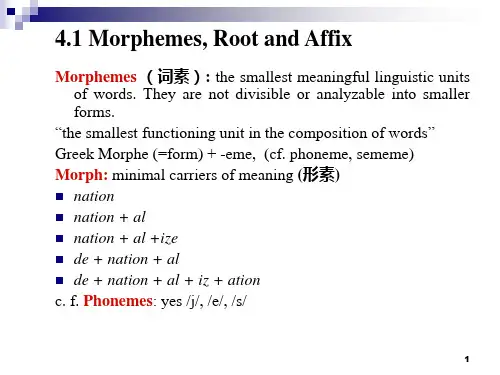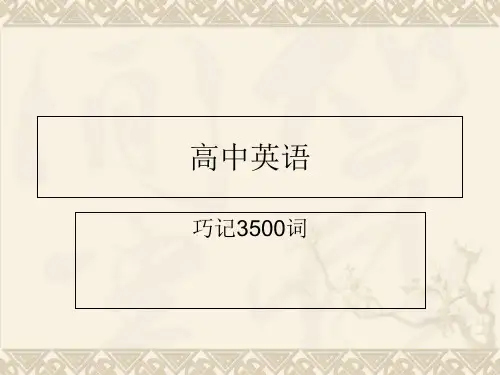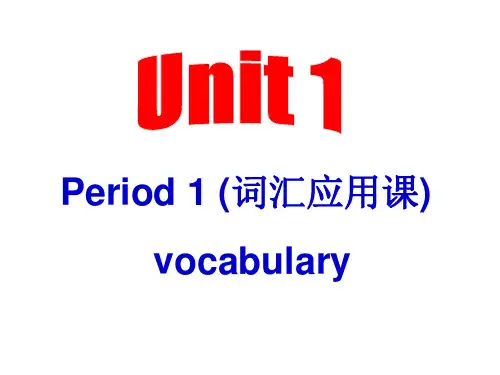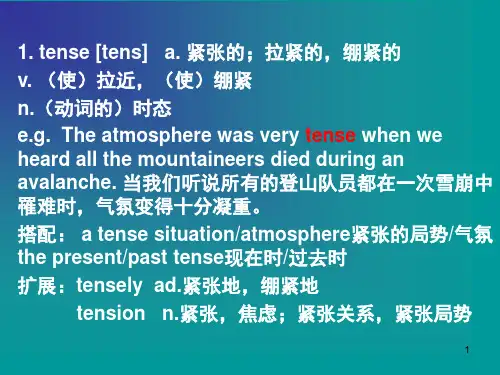7
b. Bound roots: Quite a number of roots derived from foreign sources, esp. from Greek and Latin, belong to the class of bound morphemes. A root, whether it is free or bound, generally carries the main component of meaning in a word.
脚
foot
ped
uniped, pediform
音
sound phon
phonetics, microphone
日
sun
sol
solar, insolation
月 moon lun
lunar, lunatic
星 世界 生命
star world life
astro(er) cosm(o) bi(o)
Notice what the following words have in common: e.g. -tain contain, detain retain (L tenere "to hold")
-ceive conceive, deceive receive. (L capere "to take") revive vitamin vital vivacious vivid In Modern English, they are not words, and not free morphemes; they cannot exist on their own. Nor can they be used to form new words, because these items have no identity outside the small group of words in which they appear. So on formal grounds, ceive, -tain are considered bound morphemes or bound roots which always occur in morphemic sequences, i.e. in combination with roots or affixes.










